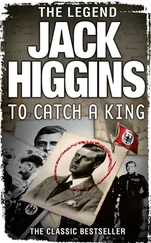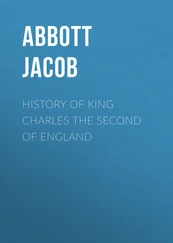Besides, while she heard endlessly from Henrietta Maria how smitten Charles was with her, she saw little supporting evidence from her young cousin himself. Mademoiselle wrote: ‘Had he spoken for himself there is no knowing what might have been the result, but this I do know, that I was little inclined to listen to proposals in favour of a man who could not say anything for himself.’15
The gangly Charles was noticeably ill at ease at the various balls and entertainments that Henrietta Maria forced him to attend. His clumsy attempts to woo Mademoiselle, under maternal duress, soon made him an object of pity at court. Meanwhile, the duchess found him coarse. At a dinner where ortolans were offered up as the finest of delicacies (the tiny songbirds, drowned in Armagnac, were eaten whole, brains, beak, bones and all), Charles was believed to have let himself down by instead gorging on a shoulder of mutton and a side of beef. After eating, the other guests left the royal teenagers together to flirt. But, Mademoiselle would remember with dismay, Charles did not utter a word. After a quarter of an hour of silence, she gave up.
While Charles’s awkwardness was upending his mother’s matchmaking schemes, the queen in turn upset her son by continuing to treat him like a child. Henrietta Maria insisted that he carry on being bareheaded in her presence, an unusual protocol for a prince of his age and seniority. She also excluded him from important meetings, and insisted on receiving the pension paid to him by the French Crown, so that he was dependent on her for his allowance. Charles’s thoughts focused increasingly on getting away from France, and his mother, and doing what he could to fight for his father’s cause, as soon as the opportunity arose.
In the spring and summer of 1648 the Second Civil War crackled into life in England and Wales, the king’s cause spearheaded by a Scottish invasion from the north on his behalf. That July Charles went from France to The Hague, on the Netherlands coast, to lead a force of English ships that had mutinied against the Commonwealth and declared for the Crown. This fleet was urgently needed to support the Royalist uprising in southern and eastern England. While it prepared for deployment Charles spent time with his younger siblings, Mary, Princess of Orange, and James, Duke of York, who had recently arrived in the Netherlands after escaping from imprisonment in London. Also on hand were two of his first cousins, Princes Rupert and Maurice of the Rhine, who had served as leading Royalist generals in the Civil War.
It was during this month of family reunion and preparation for action at sea that Charles met, and fell for, Lucy Walter.
Lucy was the daughter of William and Elizabeth Walter. Her father was a minor landowner from Pembrokeshire, in south-west Wales, while her mother was from a similar social background, with a small injection of aristocratic blood. Theirs was a poisonous marriage, the diarist John Evelyn referring to both parents as ‘very mean creatures’.16 Taking accusations of her husband’s abusive behaviour and abandonment to the House of Lords, Elizabeth achieved a judgement against him in 1641. This ruling was overturned six years later, in February 1647, when counter-accusations against Elizabeth, including that of infidelity, held sway. Lucy refused to obey the Lords’ ruling that she and her two brothers return to their father’s household in Wales.
Lucy was a raven-haired, blue-eyed seventeen-year-old beauty, endowed with a shrewdness to match her striking looks. John Evelyn, who shared a carriage ride with the teenaged girl, marked her down in his diary as a ‘brown, beautiful, bold, but insipid creature’,17 while James II thought her ‘very handsome, of little wit, and some cunning’.18
What marked Lucy out for relentless male attention, from a young age, was a pulsating sexual magnetism. So many men desired her that she was quick to appreciate her exceptional bedroom value. It was the start of a livelihood that had Evelyn looking back on her as nothing more than ‘a beautiful strumpet’.19 She would become the kept woman of important and wealthy men, including two of the sons of Robert, Earl of Leicester.
The first of these was twenty-four-year-old Algernon Sidney, a dashing colonel in the rebel army who had been wounded in battle, and who would later declare the execution of Charles I to be ‘the justest and bravest act … that was ever done in England, or anywhere’.20 James II would maintain that Algernon had contracted for Lucy Walter’s services with forty gold coins. Others believed her favours had cost him fifty. Either way, it was a small fortune, especially given the brevity of the affair: Sidney was suddenly sent with his regiment to bolster the garrison of Dover Castle, leaving Lucy on her own.
Lucy then moved to the Netherlands, where she was pleased, though probably not surprised, to find herself surrounded by eligible Royalist exiles, wealthy enough to compete for the pleasure of her company. She was soon taken up by Algernon’s younger brother, Colonel Robert Sidney. He was a courtier to Prince Charles, with what was to prove the apt title of Groom of the Bedchamber: Robert was Lucy’s lover when Charles appeared in the Netherlands to prepare his ships for the expected foray against Parliament.
Some contemporaries believed that Charles was already aware of Lucy’s charms, having glimpsed them for himself when younger: ‘Her beauty was so perfect that when the King saw her in Wales, where she was, he was … charmed and ravished and enamoured,’ a French noblewoman claimed.21 However, it was Lucy who engineered the meeting with, then the seduction of, Charles in July 1648. At this time, aged eighteen, Charles was, according to an admiring Scot, ‘One of the most gentle, innocent, well-inclined Princes, so far as yet appear, that lives in the world [with] a trim person, and a manly carriage’.22 The account of Madame de Motteville, a French courtier, largely tallies with this generous description, recalling Charles at this time as ‘well-made, with a swarthy complexion agreeing with his fine black eyes, a large ugly mouth, a graceful and dignified carriage and a fine figure’. Whatever Charles’s physical characteristics, Robert Sidney realised that it would be unwise to compete with the heady attention of his royal master, and stood aside.
During the time the prince spent in The Hague that summer, awaiting the readiness of his fleet, Lucy became pregnant with the first of what would eventually be more than a dozen of Charles’s children by various mistresses. Their son, James, was born in Rotterdam on 9 April 1649, ten weeks after the execution of his grandfather Charles I, and nine months after the start of Charles and Lucy’s liaison. Gossips pointed out that there had been no discernible gap between the conclusion of Lucy’s relationship with Robert Sidney and the beginning of her affair with the prince, and rumours attached to Lucy’s son all his life that questioned whether he was in fact of royal blood. Charles, though, always accepted that James was his son, and publicly acknowledged the fact when giving him the title of Duke of Monmouth.
Meanwhile a shortage of funds kept Charles’s fleet at anchor, so that his efforts to help his father’s cause in the Second Civil War largely came to nothing. When he eventually sailed, his ships harassed and captured a few lesser vessels, before squaring up to the rebel navy in the Thames estuary in August 1648. In the preparations for the battle Charles impressed his men with his insistence on sharing their danger, the courtier Sir Robert Long reporting: ‘I must not forget to tell you, the Prince behaved himself with as much gallantry and courage in this business as ever you saw; for when his lords and all the seamen came to desire him to go down into the hold, under the decks, he would not hear of it, but told them his honour was more to him than his safety; and desired them not to speak of it any more.’23
Читать дальше












